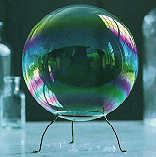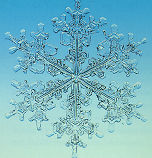


|
A Drop of Water - A Book of Science and Wonder.
Walter Wick. Subject Headings: Review by Jo-Anne Mary Benson. **** /4
|

excerpt:
Water's curious behaviour has mystified people for centuries. Many of these mysteries have been solved through careful observation and diligent experimentation.
 With more than 300 magazine covers to his credit, Walter Wick has
demonstrated his expertise as a photographer. Children are also
familiar with his work from the popular I Spy books. In this
latest undertaking, Wicks takes a scientific approach to exploring
the wonderful world of water in its various forms.
With more than 300 magazine covers to his credit, Walter Wick has
demonstrated his expertise as a photographer. Children are also
familiar with his work from the popular I Spy books. In this
latest undertaking, Wicks takes a scientific approach to exploring
the wonderful world of water in its various forms.
The photographs, the most dominant aspect of the book, immediately
appeal to the inquisitive nature of children. Wick provides
visual rewards throughout with each photograph possesing a certain
element of discovery. From the cover's photo of a droplet falling
into a glass to the fascinating details of snowdrops, children will
eagerly anticipate the turning of the next page.

A Drop of Water, though a visual delight, offers so much more to readers. Simple experiments encourage children to float a pin in a glass of water or discover shapes in bubbles. Readers can participate in various activities, such as demonstrating molecules in motion by using food colouring or simulating cloud formation under a glass. By engaging in just some of these hands-on experiments, readers will discover the meaning of such things as surface tension, condensation, vapour and refraction. Children will be surprised to find that something as common as water can be such a fascinating subject, and they will be encouraged to investigate further.
Though most of the book's activities are visually self-explanatory, the accompanying text is very concise and written in a language that youngsters can easily understand. To aid readers further, the author provides a two-page spread at the end of the book which describes the experiments in a more instructional manner. This feature makes the book a worthwhile addition to any educational environment.
Wick does a superb job in both presenting his material and illustrating the concepts. His photography turns a simple act, like a drop falling from a faucet, into a work of art. The overall presentation holds much child appeal and leaves readers eagerly awaiting his next work.
Highly recommended.
Jo-Anne Mary Benson is a writer/reviewer for North American books, magazines, newspapers and journals.

To comment on this title or this review, send mail to cm@umanitoba.ca.
Copyright © 1997 the Manitoba Library Association. Reproduction for personal use is permitted only if this copyright notice is maintained. Any other reproduction is prohibited without permission.
Published by
The Manitoba Library Association
ISSN 1201-9364
TABLE OF CONTENTS FOR THIS ISSUE
AUTHORS | TITLES | MEDIA REVIEWS | BOOKSHELF | BACK ISSUES | SEARCH | HOME